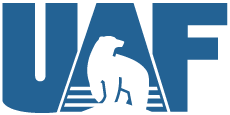Registration open for three-day pesticide training course
Julie Stricker
907-474-5406
March 24, 2025
A three-day online workshop, available statewide, is scheduled in April for people who wish to become certified pesticide applicators in Alaska.
The University of Alaska Fairbanks Cooperative Extension Service will teach the course via Zoom from 9 a.m. to 5 p.m. April 22-24. The classes are designed to help participants understand and pass the Alaska Department of Environmental Conservation exam. Register using the online form or visit https://bit.ly/PSEPtraining.
The state of Alaska requires certification for anyone who purchases, uses or sells restricted-use pesticides. Anyone who acts as a pesticide consultant, engages in the commercial or contract use of pesticides or supervises their use at a public location also must be certified with the Alaska Pesticide Control Program. Applicator category descriptions can be found on the Alaska Division of Environmental Health Pesticide Control Program website.
The course would also be informative for anyone interested in pesticide safety and
hazards.
A $75 fee includes study materials available by appointment at Cooperative Extension offices. To make an appointment for pickup, contact Molly Johansson in Anchorage at mjohansson@alaska.edu; Rebecca Yoder in Palmer at rlyoder@alaska.edu; Alicia Glessing in Soldotna at akglessing@alaska.edu; Ronda Boswell in Fairbanks at rlboswell@alaska.edu; or Eve Karczmarczyk in Delta Junction at eekarczmarczyk@alaska.edu.
The materials will be mailed to individuals in other communities for an additional $25. Registration deadline is April 17.
For more information, contact Karczmarczyk at eekarczmarczyk@alaska.edu or 907-895-4215.
ADDITIONAL INFORMATION: Accommodation requests related to a disability should be made five business days in advance to Karczmarczyk. Language access services, such as interpretation or translation of vital information, will be provided free of charge to individuals with limited English proficiency upon request to amnorris2@alaska.edu.
This work is supported by the U.S. Department of Agriculture’s National Institute of Food and Agriculture.
209-25



